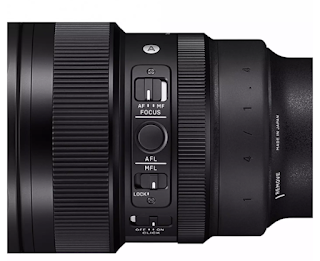Sigma Announces World's First 14mm f/1.4 Lens For Astrophotography
Sigma launches the world's first 14mm f/1.4 lens for stunning starscape photography, available in Sony E-mount and Leica L-mount.
The Sigma 14mm F/1.4 (A) DG DN lens is a wide-angle prime lens designed for Sony E-mount cameras. Here's some information about this lens:
Aperture: The lens has a maximum aperture of f/1.4, which allows for excellent low-light performance and the ability to create a shallow depth of field. The wide aperture also helps in capturing fast-moving subjects.
Focal Length: The 14mm focal length makes it an ultra-wide-angle lens, ideal for landscape, architecture, and astrophotography. It offers a wide field of view, allowing you to capture expansive scenes and fit more into your frame.
Design: The lens is part of Sigma's "Art" series, known for its high-quality optics and construction. It is designed specifically for mirrorless cameras, featuring a short flange focal distance and optimized optical performance for Sony E-mount cameras.
Autofocus: The lens utilizes a fast and accurate autofocus system, ensuring quick and precise focusing on your subject. It also provides full-time manual focus override, allowing you to make fine adjustments manually even when autofocus is engaged.
Optical Construction: The lens features a complex optical design with multiple special elements to minimize distortions, chromatic aberrations, and other optical imperfections. This ensures high image quality and sharpness across the frame.
Weather-Sealing: The lens has a weather-sealed construction, which helps protect it from dust and moisture. This feature is especially useful when shooting in challenging outdoor conditions.
Filter Compatibility: The Sigma 14mm F/1.4 (A) DG DN lens has a front filter thread size of 95mm, allowing you to attach various filters such as UV filters, circular polarizers, and neutral density filters.
Overall, the Sigma 14mm F/1.4 (A) DG DN lens is a high-quality wide-angle prime lens designed for Sony E-mount cameras. It offers a bright aperture, excellent optical performance, and a rugged construction, making it suitable for a wide range of photography applications.
The Sigma 14mm F/1.4 (A) DG DN lens is well-suited for astrophotography due to its wide-angle focal length and large maximum aperture. Here are some reasons why this lens can be a great choice for capturing images of the night sky:
Wide Field of View: The 14mm focal length provides an expansive field of view, allowing you to capture a wide portion of the night sky. This is particularly beneficial when photographing vast star fields, the Milky Way, or capturing the horizon along with the night sky.
Fast Aperture: The lens has a maximum aperture of f/1.4, which allows for a significant amount of light to enter the camera sensor. This helps in capturing clear and detailed images of stars, even in low-light conditions. The wide aperture also enables you to use faster shutter speeds, reducing the chances of star trailing.
Sharpness and Image Quality: The lens's optical construction and high-quality optics ensure sharpness and excellent image quality, even when shooting wide open at f/1.4. This is important for astrophotography, where capturing fine details and pinpoint stars are crucial.
Minimal Distortion and Aberrations: The lens's optical design minimizes distortions and chromatic aberrations, resulting in cleaner and more accurate star rendering. This is essential for capturing stars as pinpoint lights without noticeable distortion or color fringing.
Low-Light Performance: The lens's wide aperture combined with modern camera sensor technology allows you to capture images with less noise and better detail in low-light conditions. This is especially important for astrophotography, where capturing faint stars and celestial objects requires high sensitivity and low noise levels.
Full-Time Manual Focus Override: The lens provides full-time manual focus override, allowing you to make precise adjustments to achieve perfect focus on stars or specific points in the night sky. This feature is particularly useful when autofocus struggles to lock onto dim celestial objects.
When using the Sigma 14mm F/1.4 (A) DG DN lens for astrophotography, it's important to consider other factors such as proper tripod support, remote shutter release, and understanding techniques like long exposures and stacking to capture stunning images of the night sky.



Comments
Post a Comment